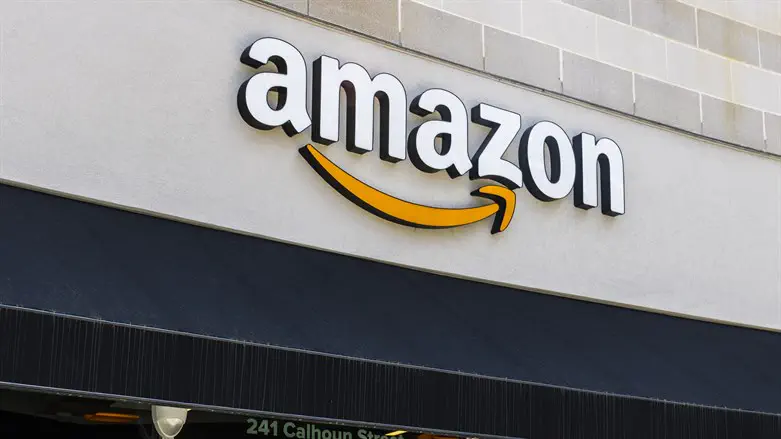
Amazon (AMZN), which began as an online bookshop, has grown into a global company worth more than one trillion dollars. The company has achieved success, among other things, because of its culture of customer satisfaction, wide range of products, and use of advanced technology.
However, one key factor that has contributed to the multicontinental growth of the e-commerce platform, but is not discussed that much, is the effective management of the supply chain.
In this article, we reveal how Amazon’s supply chain innovations increase operational effectiveness, improve service quality, and enhance shareholder value.
The Backbone of Amazon: An Evolving Supply Chain
As previously stressed, an efficient supply chain is the lifeblood of Amazon as it ensures goods come from suppliers and reach customers within a short time. From the beginning, it was clear to Amazon that unlocking further growth would solely depend on its capacity to offer better management of its inventory, shipments, as well as deliveries. Amazon has built a lot of world-class logistics support systems, including packing warehouses, sorting structures, and distribution channels over the years. However, what distinguishes Amazon from the rest is its inherent aspiration to develop and advance these systems further.
There is great pride in Amazon incorporating automation and robotics into its fulfillment centers, which can be considered a great achievement for the company. It was an exciting shift when Amazon bought Kiva Systems in 2012 with the promise of deploying robots to drive and carry inventory in its warehouses, where the speed of fetching and packing goods was of the utmost importance. This automation has not only lowered the cost of labor but has also curbed human mistakes, hence reducing turn-around times and improving the efficacy of order processing.
Worlds can further be appraised from the very fact that the company has also opted to develop a competitive thirst among their employees. It is in this regard that one can conclude that huge capital has been put into the use of artificial intelligence and machine learning to better manage their inventory Situational forecast working for Amazon is so good that it makes sure that the popular items will be in stock most of the time, but there is a bulk of products that are not that fortunate, and therefore there is no need in that excessive stocking. The said level of efficiency enables cost savings on storage and better circulation of working capital, which are some of the ways of being profitable in the retailing industry characterized by thinning margins.
Technical analysis of Amazon Stock: The role of VWAP
The Amazon stock price has been following some interesting patterns in terms of technical analysis, which can help understand trader behavior and predict future price movements. One of the technical indicators widely used in the Forex market, especially for short-term trades in day trading, is the volume weighted average price known as VWAP.
This is important for traders since it indicates an average price for a stock at a particular time, integrating volume along with the price. When Amazon trades above its VWAP, this indicates that there is a surge in buying and the stock is likely aimed at upward movement. On the other hand, when the stock price trades below its VWAP, selling activity is likely dominant leaving very little chances of an upward movement.
Lately, investors have allegedly felt bullish about Amazon since its stock trades above VWAP. This pattern indicates that the market believes the company will be able to operate efficiently and generate significant profits for a considerable period. For short-term trades, the VWAP can assist traders in knowing when and at what level of price movement to buy or sell the stock.
For more information about the VWAP indicator and its application in trading Amazon's shares resources regarding the use of VWAP can be found here.
Supply chain innovations: Equipped with a competitive advantage
There are a great deal of supply chain innovations done by Amazon beyond the confines of its warehouses, which are largely internal to the organization. The organization has a comprehensive logistics network that includes Amazon Air, a fleet of cargo planes, and Amazon Prime Air, which offers the prospect of drone deliveries in the future. Such initiatives help to curve the time and cost of delivery, allowing Amazon to have a bigger general advantage over other retailers.
In 2019, the company made a bold announcement that it intended to procure electric vans for no other reason other than to produce zero net carbon emissions by the year 2040. Such a strategy clearly follows the current trends regarding ecological concerns, and several years from now, there will be minimal costs for replacing and servicing combustion engines. As environmental issues become an integral part of consumers’ purchasing decisions, the green logistics strategy can enhance the image of the Amazon brand and capture green consumers.
In addition, Amazon.com's supply chain is backed by unbelievable logistics software that they developed themselves. This software uses data from many sources to monitor every stage of delivery. Such software empowers Amazon to implement strategies such as rerouting delivery parcels that are delaying firmware/HMIs or changing the plans/strategies to deliver based on traffic conditions.
The effect on stock value
As far as it has been noted, there has been a positive enhancement in the value of the stock of senior management of Amazon, courtesy of high levels of operational efficiency gained through the relentless practice of Supply Chain Management. By lowering operational costs, increasing the pace of delivery, and improving customer relations, Amazon has been able to remain a leader even in a tight retail market. So is their performance in terms of revenue generation, where they have been able to overtake their competitors at a constant rate.
The stock market, to some extent, appreciates Amazon stock, an investor’s desire for innovative supply chains, especially in how high the stock performs. Good operations also bring about catch-and-return operations, which bring out good earnings per share figures. Amazon has increasingly offset its competitors’ strategic growth as Amazon logistics continues to develop, making it a great reserve on the depletion of market share.
In addition, Amazon has been able to expand logistically into other forms of business beyond e-commerce. Through Amazon Transportation Services, the Company extends its logistics to third-party sellers and other businesses beyond its internal operations. Such a shift adds revenue potential and further strengthens Amazon's dominance in sourcing functions.
Challenges and future outlook
Although proven effective, Amazon's supply chain still has shortcomings, including labor disputes, regulatory pressures, and high transportation and material costs. In addition, as teleoperated machines and robots are employed, there are worries of job losses and backlash from labor organizations.
As for the challenges, in the future it will be important for the company to develop appropriate measures with regard to supply chain innovations. The company wants to improve the efficiency of its supply chain even further by utilizing emerging technologies such as autonomous delivery vehicles and advanced robots for locomotion in the facilities. In moving forward, it appears the company’s time and effort in curbing carbon emissions will be more direct with stringent environmental regulations and demand for clean products becoming a narrative.
Conclusion
Be it robotics and automation, AI-based inventory controls, or a green supply chain, Amazon's resources seem to know no limits. Such endeavors not only help increase the efficiency of operations but also forge a very strong competitive edge that has indeed supported Amazon's leadership in the market. The company will seek growth in the future by maintaining its focus on technology and sustainability.
Problems still exist, but considering the company’s history of turning challenges into opportunities and the ever-changing environment, the prospects of the company continue to be positive. Something that investors should be excited about, based on these factors, includes the developing supply chain strategy of the company and its rationale in considering the long term prospects of the stock.
